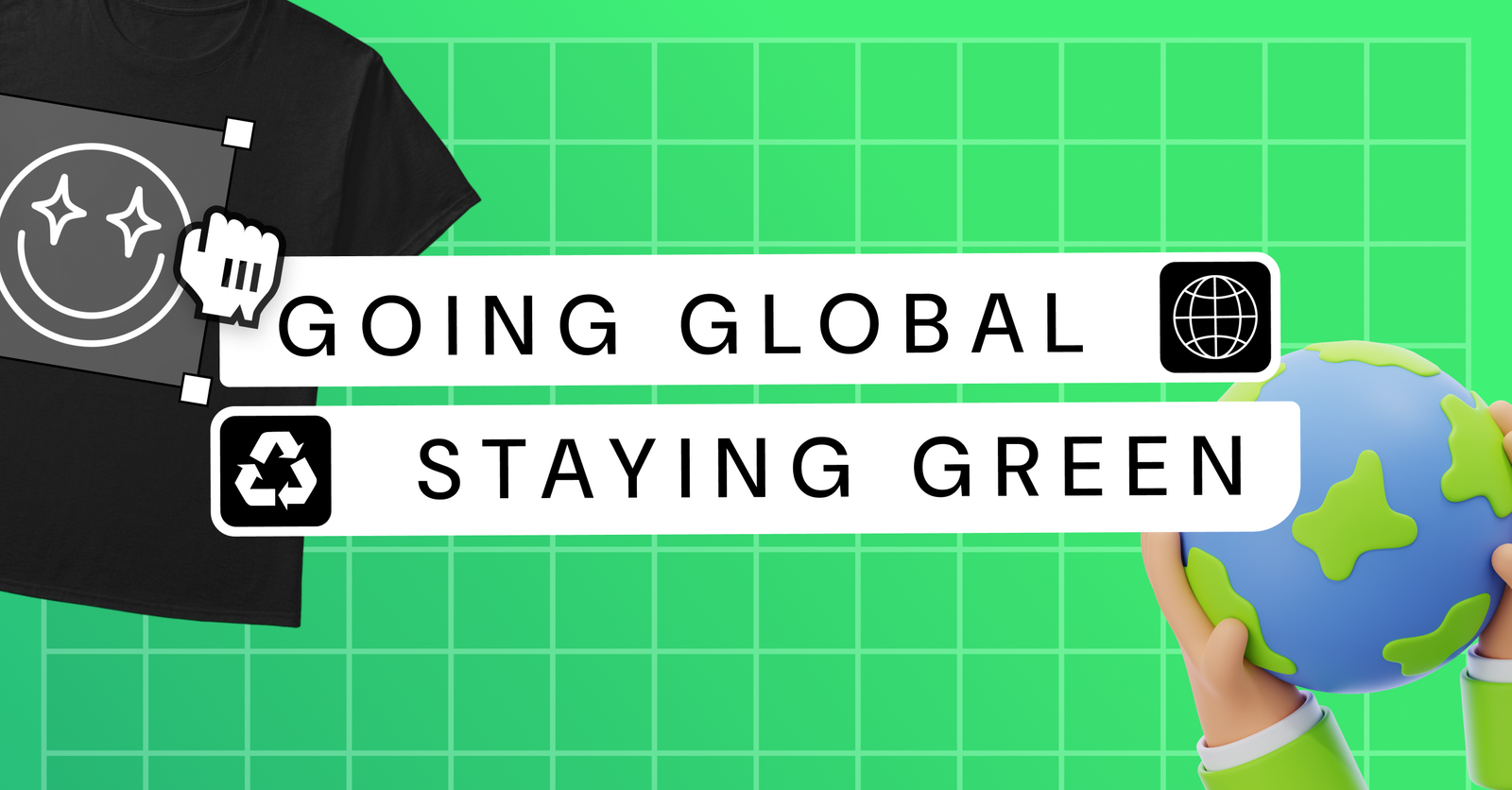Fast fashion has become the norm. Cheaply made, mass-produced items are often worn only a handful of times before being discarded. This cycle of disposable fashion not only creates enormous amounts of waste but also fuels global sourcing practices that prioritize low cost over ethical production, driving up carbon emissions and environmental degradation.
The problem extends beyond clothing. Creators who want to offer quality, responsibly sourced products to their communities often face the challenge of balancing cost, sustainability, and accessibility. This conflict is worsened by the environmental toll of global retail—cheap sourcing, long shipping routes, and products that ultimately end up in landfills.
But as consumer awareness grows, sustainability is becoming increasingly important, especially for younger generations. 75% of Gen Z shoppers believe that buying sustainable products is more important than purchasing based on brand name, and 75% of millennials consider sustainability when making purchases. Creators care too, but they often lack the tools to meet these demands without sacrificing profitability or reach.
A Sustainable Solution for Creators and Their Communities
At Amaze, we’re committed to changing the way creators connect with their audiences. It’s not enough to simply offer creators a platform to sell their products; we need to make it smarter and more sustainable. We’re addressing the root issues by reshaping how products are created, sold, and delivered.
Our global expansion isn’t just about reaching more creators and fans—it’s about building smarter, more sustainable connections. By optimizing shipping routes, embracing local production, and reducing product costs, we’re helping creators reach their audiences faster, more efficiently, and with a lower environmental impact. This is how we’re building a sustainable future for creator commerce—where creativity thrives and carbon footprints shrink.
Printing Only What’s Sold and Reducing Waste with Manufacture-on-Demand
One of the biggest contributors to environmental waste is overproduction. In traditional retail models, items are produced in bulk, and unsold products often end up as waste, contributing to landfills. This is a significant challenge for creators who may not have the ability to accurately predict demand but still want to offer products to their fans.
At Amaze, we’ve embraced a manufacture-on-demand model, which is fundamentally more sustainable. Instead of producing large quantities of stock upfront, we only create products when they’re actually sold. This helps reduce waste by 90% and gives creators the freedom to experiment with new ideas without the risk of overproduction. For creators, this means they can sell their products without the fear of items sitting on shelves unsold, and for the environment, it means less waste.
This practice also benefits creators financially. By removing the need for large upfront investments in inventory, creators can test new products without taking on unnecessary risk. They can focus on refining their offerings based on audience demand rather than worrying about unsold stock.
Optimizing Shipping and Cutting Emissions with Local Production
When a fan does buy a product, we’ve set up back-end logistics to make sure it gets to them in the most sustainable way possible. A big change we’ve made to support our global expansion has been our partnership with 25 different fulfillment centers around the world, including in regions like Australia, Europe, the UK, India, and Mexico. These fulfillment centers mean creators can get products to fans faster at a lower cost, but it’s not just speed and affordability we’re after — they also help us cut down on transportation emissions.
The impact is pretty big. In Australia, for example, our new fulfillment center has helped us cut 15,000 kilometers off of our transport distances, which has slashed emissions by 98%. Previously fans had to wait for imports from the US or the EU, which could take anywhere from 9-17 days. Now, if Australian fans order from a creator that uses Amaze, shipping only takes 2-7 days.
Our local fulfillment centers have the added benefit of making products more affordable for fans. Where previously fans would have to pay higher shipping costs or import tax fees, local fulfillment means they can skip these expensive add-ons. In Australia, the local production, fulfillment, and distribution means we’ve been able to cut shipping costs for fans by an average of $8.50. The more affordable shipping means that creators can keep their products accessible.
Sustainable Packaging
We’re also continuously working on improving how we package products. We ship everything out in white-label standard plain poly mailers. We don’t do any individualization, because it creates extra costs, complications, and waste. We’re working hard to minimize, if not eliminate, plastics in our packaging—continuing our commitment to more sustainable production and shipping practices.
Environmentally-Friendly Production
The products we help creators bring to life aren’t just sustainable in terms of production—they’re designed to be high-quality items that customers will want to keep and use, rather than throw away after a few wears. Our eco-friendly, water-based, biodegradable inks and sustainably sourced cotton ensure that products are responsibly made. In addition, our production facilities operate with green technology, minimizing pollutants, toxic fumes, and waste
The Path Forward: A Sustainable Future for Creator Commerce
At Amaze, we understand that sustainability is not a one-time fix but an ongoing commitment. We’re proud of the progress we’ve made so far, but we know there’s still more work to do. By embracing sustainable practices like manufacture-on-demand, local fulfillment, and eco-friendly materials, we’re helping creators not only grow their businesses but do so in a way that positively impacts the planet.
Our mission is simple: build a future where creator commerce thrives without compromising the environment. By building smarter, more sustainable connections, we’re ensuring that creators and their communities can continue to create and innovate, all while leaving a smaller footprint.


